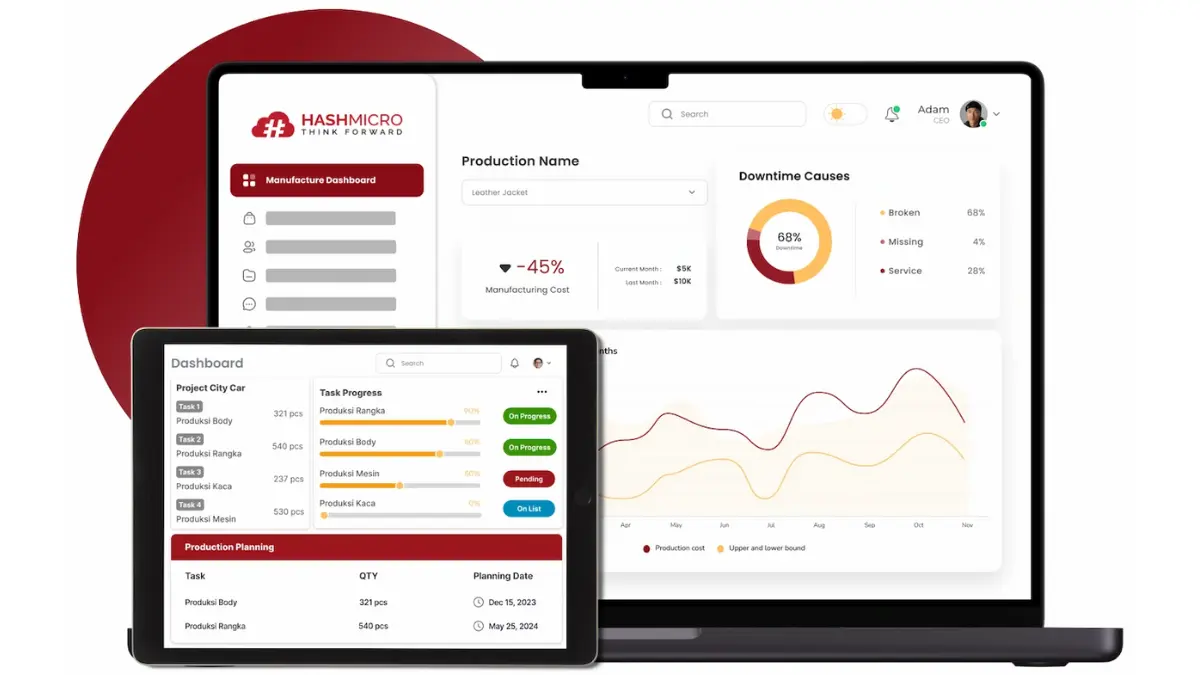Vendor sourcing is the process of identifying, evaluating, and selecting suppliers to meet the specific needs of a business, whether for goods or services. It works by carefully assessing potential vendors to ensure that they align with the company’s goals.
However, without the right software, companies may face significant challenges in vendor sourcing. These include difficulty in effectively monitoring vendor performance, risks of delivery schedule mismatches, decreased operational efficiency leading to higher costs, and the inability to build strong vendor relationships. Moreover, poor decision-making or wrong vendor selection can result in missed business opportunities.
Implementing vendor management software is crucial to overcoming these challenges. According to a recent survey, automating compliance review processes has drastically reduced the time needed to validate vendor-reported Key Performance Indicators (KPIs). What used to take an entire day now only takes five minutes, reflecting a 95% reduction in compliance review time.
Such automation in vendor sourcing management is highly beneficial in the overall operation of the business. So, check out this article and discover comprehensive insights on vendor sourcing and software solutions that can streamline your processes.
Table of Content:
Table of Content

Key Takeaways
|
What is Vendor Sourcing?
Vendor sourcing is a process that involves evaluating and selecting suppliers to secure essential goods and services, whether for direct sales or production. A strategic vendor sourcing process is crucial for meeting financial goals and sustaining growth.
By carefully planning and executing this process, you ensure that vendors meet your criteria, including price, quality, reliability, customer service, and delivery schedule. Moreover, a well-executed vendor sourcing strategy enhances vendor relationship management, ensuring that your business builds strong, long-term partnerships with reliable suppliers.
In addition, supplier sourcing goes beyond simply finding the lowest price—it involves assessing each vendor’s ability to deliver consistent quality, meet deadlines, and adapt to your evolving needs. By focusing on these critical factors, you can create a robust supply chain that supports your business’s overall success.
Types of Vendor Sourcing
In the ever-evolving landscape of procurement systems, understanding the different types of vendor sourcing is essential for optimizing your supply chain strategy. By selecting the right sourcing approach, companies can not only improve efficiency but also strengthen vendor relationships and drive long-term success.
Let’s explore the key types of vendor sourcing and how each can benefit your business.
1. Outsourcing: When a company opts for outsourcing, it contracts a third-party vendor to manage tasks that would otherwise be handled internally. This strategy not only taps into specialized expertise but also enhances operational efficiency and cost-effectiveness by freeing up internal resources.
2. Insourcing: In contrast, insourcing relies on utilizing internal resources and employees to manage operations that could be outsourced. This approach provides greater control over processes, allowing the company to directly apply its knowledge and expertise to achieve desired outcomes.
3. Near-sourcing: Near-sourcing involves selecting vendors that are geographically closer to your business, often within the same region or country. This approach reduces transportation costs and lead times, while also minimizing potential communication barriers, leading to more efficient supplier sourcing.
4. Global vendor sourcing: Global vendor sourcing engages vendors from various countries, leveraging their unique strengths and capabilities. While it can be complex, this strategy offers significant opportunities for cost savings, innovation, and diversification of supply chains through effective vendor relationship management.
4 Benefits of Vendor Sourcing
Vendor sourcing is a critical component in optimizing your supply chain and ensuring that your business runs smoothly. By strategically selecting and managing your vendors, you not only gain access to the best products and services but also strengthen your overall business operations.
Let’s explore four key benefits of effective vendor sourcing that can significantly impact your company’s success.
1. Lower costs
One of the primary benefits of vendor sourcing is the potential for significant cost savings. Your company can reduce operational expenses by carefully selecting vendors who offer competitive pricing and efficient processes. This approach lets you focus your budget on other critical areas, driving overall business growth.
2. Risk management
Vendor sourcing also plays a crucial role in managing and mitigating risks within your supply chain. By diversifying your vendor base, you can avoid over-reliance on a single supplier, reducing the impact of potential disruptions. Moreover, working with vendors who meet industry standards ensures you maintain compliance and quality, safeguarding your operations.
3. Sustainable procurement
Embracing vendor sourcing with a focus on sustainability can lead to more responsible procurement practices. Your company can support long-term sustainability goals by choosing vendors who prioritize environmental and social responsibility.
Furthermore, this commitment to ethical sourcing can enhance your brand’s reputation and appeal to increasingly conscious consumers. To capitalize on these benefits, consider utilizing the procurement ERP software provided by HashMicro, which supports ethical sourcing practices; you can also take advantage of their free demo to experience the advantages firsthand.
4. Better vendor relationships
Finally, effective vendor sourcing fosters more substantial and collaborative relationships with your suppliers. By engaging with vendors who align with your business values and objectives, you can build mutually beneficial partnerships. Over time, these positive relationships can lead to better communication, improved service levels, and more favorable terms for your company.
7 Steps of the Vendor Sourcing Process
Before diving into the vendor search process, it is important to understand the key steps that ensure a successful outcome. By following a structured approach, your business can simplify supplier selection and build strong vendor relationships that drive long-term success.
The following are the 7 steps of the Vendor Sourcing Process that you must understand for your business success:
1. Assess needs and requirements
The first step in the vendor sourcing process is thoroughly assessing your company’s needs and requirements. You can establish clear criteria to select the most suitable vendors by identifying the specific goods or services needed.
This step ensures alignment with your strategic objectives and that the sourcing process effectively addresses your business goals.
2. Access the market
Once you clearly understand your needs, it’s time to access the market to identify potential vendors. Conducting thorough market analysis and research allows you to explore the available options, compare offerings, and evaluate the capabilities of different suppliers.
This step is crucial in finding vendors that meet your needs while offering competitive advantages, such as cost savings or innovation.
3. Build sourcing guidelines
With a solid market understanding, the next step is to build comprehensive sourcing guidelines. These guidelines serve as a framework for evaluating vendors and making informed decisions throughout the sourcing process.
Establishing clear criteria, such as quality standards, pricing expectations, and delivery timelines, ensures consistency and transparency in vendor selection.
4. Select the sourcing process
After setting your guidelines, choosing the appropriate sourcing process is essential. Depending on your needs, this could involve direct negotiation, a request for proposal (RFP), or even a competitive bidding process. Selecting the right approach ensures that you engage with vendors in a manner that best suits your business strategy and procurement objectives.
5. Negotiate
Once potential vendors have been identified, the negotiation phase begins. This is where you work to secure the best possible terms, including pricing, delivery schedules, and service levels. Effective negotiation not only helps in achieving cost savings but also in establishing a strong foundation for a successful and collaborative vendor relationship.
6. Incorporate vendors into the implementation process
After finalizing the agreements, it’s crucial to incorporate the selected vendors into the implementation process. This step involves clear communication and coordination to ensure that the vendor fully understands your expectations and can integrate seamlessly into your operations.
Successful integration helps in achieving desired outcomes and minimizes disruptions during the transition.
7. Monitor supplier performance through benchmarking
The final step in the vendor sourcing process is to monitor supplier performance through benchmarking. By continuously evaluating vendor performance against established benchmarks, you can ensure that they meet or exceed your expectations.
This ongoing monitoring allows you to address any issues proactively and make adjustments as needed to maintain a high level of service and quality. To further drive your business success, consider calculating the cost of our software by clicking the banner below and see how procurement software can transform your operational efficiency.
4 Best Practices for Vendor Sourcing
Adopting smart vendor sourcing practices is key to fostering strong and dependable partnerships. By following time-tested strategies, your business can streamline procurement processes and drive sustainable growth through effective vendor relationship management.
Discover the 4 Best Practices for Vendor Sourcing that are essential for your business success:
1. Keep communication open
One of the best practices in vendor sourcing is to keep communication open and transparent. Regular and clear communication with your vendors helps build trust and ensures that both parties are on the same page regarding expectations and deliverables. This open dialogue also allows you to address any issues promptly, fostering a stronger and more collaborative relationship.
2. Look beyond the price tag
While cost is an important factor, it is essential to look beyond the price tag when sourcing vendors. Quality, reliability, and the vendor’s ability to meet your needs should also be significant in your decision-making process. By considering these factors, you ensure you choose vendors offering the best value, not just the lowest price.
3. Evaluate your suppliers regularly
Regularly evaluating your suppliers is another key best practice in vendor sourcing. Conducting periodic assessments allows you to monitor performance, ensure compliance with agreed-upon standards, and identify areas for improvement. This proactive approach helps maintain high-quality service and can lead to long-term, mutually beneficial partnerships.
If you’re seeking an efficient way to automate supplier evaluations, HashMicro’s Procurement Software offers an ideal solution. With this software, you can seamlessly streamline assessments, track supplier performance, and enforce compliance with ease. Try a free demo today to see how it transforms your procurement process
4. Use the correct vendor requests
Finally, using the correct vendor requests—such as requests for proposals (RFPs) or quotations (RFQs)—is crucial in sourcing the best vendors. Tailoring these requests to your specific needs ensures that you receive relevant and detailed responses, making it easier to compare potential suppliers. This practice helps streamline the selection process and leads to more informed decision-making.
Streamline your Vendor Sourcing with HashMicro’s Procurement Management System
HashMicro is one of the leading providers of procurement software in Singapore, offering solutions tailored to businesses of all sizes and industries. With its advanced capabilities, HashMicro excels in meeting the specific needs of each business, ensuring optimal efficiency and results.
To help you explore these advantages, HashMicro offers a free demo, allowing you to experience firsthand the powerful features that set their software apart.
Some of HashMicro’s Procurement Software standout features include automated vendor management, real-time data analytics, and comprehensive procurement workflows—all designed to streamline your sourcing process.
- PO, RFQ, and PR Management: This feature enables seamless management of purchase orders (PO), requests for quotations (RFQ), and purchase requisitions (PR) within a single platform. By streamlining these processes, businesses can improve procurement efficiency and reduce administrative overhead.
- PR Approval Management: With PR approval management, businesses can establish a clear and efficient workflow for approving purchase requisitions. This feature ensures that all requests are vetted properly, minimizing errors and unauthorized purchases.
- Service Work Order Tracking: This feature allows companies to monitor and track service work orders from initiation to completion. By using this tool, you can ensure timely service delivery and maintain accurate records for future reference.
- Online Portal for Suppliers: Using the online portal, suppliers can easily access and manage their orders, invoices, and communications with your company. This portal enhances collaboration and transparency, making it easier to maintain strong vendor relationships.
- In-depth Purchase Analysis: By leveraging in-depth purchase analysis, businesses gain valuable insights into their procurement activities. This feature helps in identifying trends, optimizing spend, and making data-driven decisions for future purchases.
- Vendor or Supplier Rating: This feature allows for the systematic evaluation of vendors based on performance, quality, and reliability. By using vendor ratings, businesses can make informed decisions when selecting suppliers and maintain high standards across the supply chain.
- Blanket Order Management: Blanket order management simplifies the process of handling large, ongoing purchase agreements with vendors. This feature ensures consistent supply and allows for better planning and cost control over extended periods.
- Multi-Purchase Model: With the multi-purchase model, businesses can manage different purchasing methods, such as bulk orders or just-in-time procurement, within the same system. This flexibility enables companies to tailor their procurement strategies to specific needs and market conditions.
- Landed Cost Calculation: This feature accurately calculates the total landed cost of goods, including shipping, taxes, and other fees. By using landed cost calculation, businesses can better manage their budgets and avoid unexpected expenses.
In addition to these features, HashMicro’s software integrates seamlessly with third-party systems, offers highly customizable functionalities, and provides excellent after-sales support to ensure ongoing success.
Conclusion
In today’s competitive business landscape, having a strategic vendor sourcing plan is crucial for maintaining efficiency and staying ahead. This is especially true when supported by advanced software, such as the solutions offered by HashMicro, which can significantly enhance your sourcing strategy.
HashMicro is recognized as one of the top providers of the best Procurement Management System, designed to support businesses across all industries. Their software ensures procurement efficiency through seamless integration, customizable features, and an intuitive, user-friendly interface.
To experience these benefits firsthand, we encourage you to try the free demo offered by HashMicro and discover how their solutions can transform your vendor sourcing process.

FAQ About Vendor Sourcing
-
What do you mean by supplier sourcing?
In essence, sourcing is the process of choosing suppliers to deliver the goods and services essential for your business operations. While it may seem straightforward, the process can be quite intricate. Supplier sourcing encompasses several key activities, including identifying reliable sources for quality goods and services, as well as negotiating contracts.
-
What are the three types of supplier sourcing?
When sourcing your products, you have three types of suppliers to choose from: manufacturers, distributors, and wholesalers. Each supplier type offers unique benefits and potential drawbacks, making it essential to carefully evaluate your options to select the best fit for your products.
-
What is sourcing vs procurement?
In business, sourcing and procurement are critical processes for acquiring goods and services. Sourcing involves identifying and selecting products or services from external suppliers, while procurement focuses on negotiating contracts to secure the best possible price for those needs.






































